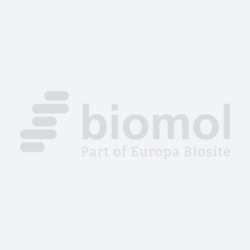Cookie preferences
This website uses cookies, which are necessary for the technical operation of the website and are always set. Other cookies, which increase the comfort when using this website, are used for direct advertising or to facilitate interaction with other websites and social networks, are only set with your consent.
Configuration
Technically required
These cookies are necessary for the basic functions of the shop.
"Allow all cookies" cookie
"Decline all cookies" cookie
CSRF token
Cookie preferences
Currency change
Customer-specific caching
FACT-Finder tracking
Individual prices
Selected shop
Session
Comfort functions
These cookies are used to make the shopping experience even more appealing, for example for the recognition of the visitor.
Note
Show the facebook fanpage in the right blod sidebar
Statistics & Tracking
Affiliate program
Conversion and usertracking via Google Tag Manager
Track device being used

| Item number | Size | Datasheet | Manual | SDS | Delivery time | Quantity | Price |
|---|---|---|---|---|---|---|---|
| M3007-13C.50 | 50 µg | - | - |
3 - 19 business days* |
984.00€
|
If you have any questions, please use our Contact Form.
You can also order by e-mail: info@biomol.com
Larger quantity required? Request bulk
You can also order by e-mail: info@biomol.com
Larger quantity required? Request bulk
HGF R, also known as Met (from N-methyl-N'-nitro-N-nitrosoguanidine induced), is a glycosylated... more
Product information "c-Met, Recombinant, Canine (Hepatocyte Growth Factor Receptor, Scatter Factor Receptor, HGFR, SFR)"
HGF R, also known as Met (from N-methyl-N'-nitro-N-nitrosoguanidine induced), is a glycosylated receptor tyrosine kinase that plays a central role in epithelial morphogenesis and cancer development. HGF R is synthesized as a single chain precursor which undergoes posttranslational proteolytic cleavage. This generates a mature HGF R that is a disulfide-linked dimer composed of a 50 kD extracellular alpha chain and a 145 kD transmembrane beta chain. 1,2 The extracellular domain (ECD) contains a seven bladed beta- propeller sema domain, a cysteine-rich PSI/MRS region, and four Ig-like E-set domains, while the cytoplasmic region includes a tyrosine kinase domain. 3 The sema domain, which is formed by both the alpha and beta chains of HGF R, mediates both ligand binding and receptor dimerization. 3,4 Ligand-induced tyrosine phosphorylation in the cytoplasmic region activates the kinase domain and provides docking sites for multiple SH2-containing molecules. 5,6 HGF stimulation induces HGF R downregulation via internalization and proteasome-dependent degradation. 7 In the absence of ligand, HGF R forms noncovalent complexes with a variety of membrane proteins including CD44v6, CD151, EGF R, Fas, integrin alpha 6/beta4, plexins B1, B2, and B3, and MSP R/Ron. 8-15 Ligation of one complex component triggers activation of the other, followed by cooperative signaling effects. 8-15 Formation of some of these heteromeric complexes is a requirement for epithelial cell morphogenesis and tumor cell invasion. 8,12,13 HGF released from neighboring mesenchymal cells stimulates HGF R on undifferentiated epithelium and induces epithelial cell scattering and branching tubulogenesis. 16 Genetic polymorphisms, chromosomal translocation, overexpression, and additional splicing and proteolytic cleavage of HGF R have been described in a wide range of cancers. 1 Within the ECD, canine HGF R shares 85%-88% aa sequence identity with human, mouse and rat HGF R. Source: Human CD33 signal peptide (Met 1-Ala 16), Canine HGF R, (Glu 25-Leu 935), HHHHHH, A DNA sequence encoding the signal peptide from human CD33 joined with the extracellular domain of canine HGF R (Glu 25-Leu 935, Accession # Q75ZY9) was fused with a 6X histidine tag at the C-terminus. The chimeric protein was expressed in a mouse myeloma cell line, NS0. Molecular Mass: The mature recombinant canine HGF R/His is a disulfide-linked heterodimer. Based on N-terminal amino acid sequencing, the recombinant canine HGF R/His has two N-termini starting at Glu 25 and Ser 309 that correspond to the alpha and beta chains, respectively. The predicted molecular mass for the alpha chain is approximately 32.6 kD, and that for the beta chain is approximately 70.1 kD. As a result of glycosylation, in SDS-PAGE, the recombinant protein migrates as an approximately 130-150 kD protein under non-reducing conditions, and as approximately 42-47 kD (alpha-chain) and 90-100 kD (beta?chain) proteins under reducing conditions. Endotoxin Level: < 1.0 EU per 1 µg of the protein as determined by the LAL method. Activity: Measured by its ability to bind rcaHGF with an estimated Kd < 0.8 nm, Reoconstitution: It is recommended that sterile PBS be added to the vial to prepare a working stock solution of no less than 100ug/ml. The carrier-free protein should be used immediately upon reconstitution to avoid losses in activity due to non-specific binding to the inside surface of the vial. For long term storage as a dilute solution, a carrier protein (e.g. 0.1% HSA or BSA) should be added to the vial. Storage and Stability: Lyophilized samples are stable for up to twelve months from date of receipt at -20°C. Upon reconstitution, this protein, in the presence of a carrier protein, can be stored under sterile conditions at 2-8°C for one month or at -20°C in a manual defrost freezer for three months without detectable loss of activity. Avoid repeated freeze-thaw cycles.
| Keywords: | MET, EC=2.7.10.1, SF receptor, HGF receptor, HGF/SF receptor, Proto-oncogene c-Met, Scatter factor receptor, Tyrosine-protein kinase Met, Hepatocyte growth factor receptor |
| Supplier: | United States Biological |
| Supplier-Nr: | M3007-13C |
Properties
| Conjugate: | No |
| Species reactivity: | dog |
| Format: | Highly Purified |
Database Information
| KEGG ID : | K05099 | Matching products |
| UniProt ID : | Q75ZY9 | Matching products |
| Gene ID : | GeneID 403438 | Matching products |
Handling & Safety
| Storage: | -20°C |
| Shipping: | +4°C (International: +4°C) |
Caution
Our products are for laboratory research use only: Not for administration to humans!
Our products are for laboratory research use only: Not for administration to humans!
Information about the product reference will follow.
more
You will get a certificate here
Viewed

